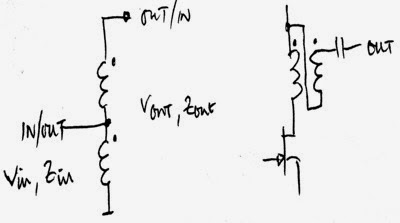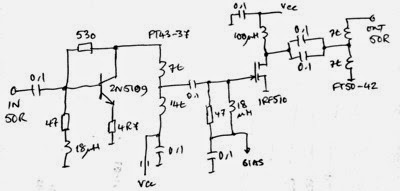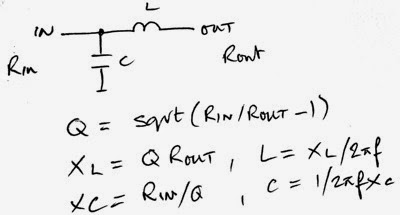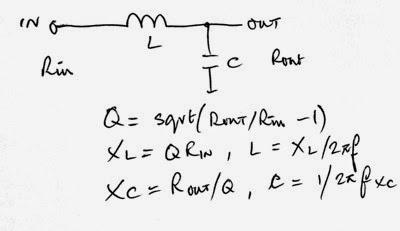The idea is to drive the AD9850 chip module from the Arduino and display the band and frequency on an LCD screen. (See previous posting). This all works fine.
The new idea was to take the square wave outputs from the AD9580 module and drive a couple of 7474 dividers, like this
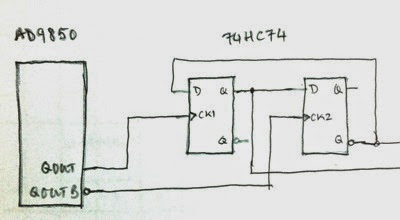
This is different from the usual circuit which drives the two clock inputs together, but which divides the input frequency by 4, here we divide by 2. This means that at the upper frequency of the AD9850 module of 40MHz we can tune our radio up to over 20MHz, so covering 160-20m bands.
I don't have an oscilloscope, but I have discovered and bought ($30) a small module called the Logic Pirate, and together with some software called LogicSniffer, I have had a look at the waveforms. They are like this:
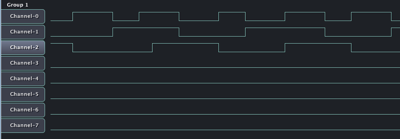
Here you can see that the basic logic is OK, the input waveforms (CH 0) have rising edges which trigger the flip-flops twice per cycle, and produce quadrature outputs (CH 1 & 2) . But there is a BIG problem, the quad outputs are not equal lengths. In theory you can adjust the mark/space ratio of the AD9850 module square wave outputs with a small pot on the board, but I have found that this is very, very sensitive, and at no position can I get equal times.
So that puts this design out, as the quad signals MUST have equal times for the Tayloe detector to work correctly.
Si570??
Now to start to think of a solution using the Si570 synthesiser chip. But for this I need a PCB and will recreate it in Eagle software to generate a small module with 0.1" pinouts. This can then be used on an Arduino Shield together with the module I have of the FT3253 on a similar 0.1" pitch. I will need to provide 3.3V for the Si570, and level shift the input SDA & SCL lines from the 5V signals of the Arduino... more later as I get this done. Here's the circuit:
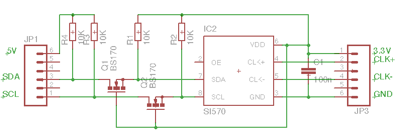
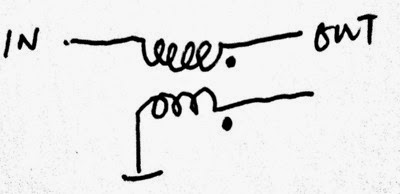
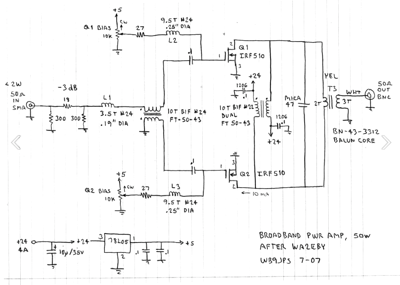 Transformers
Transformers